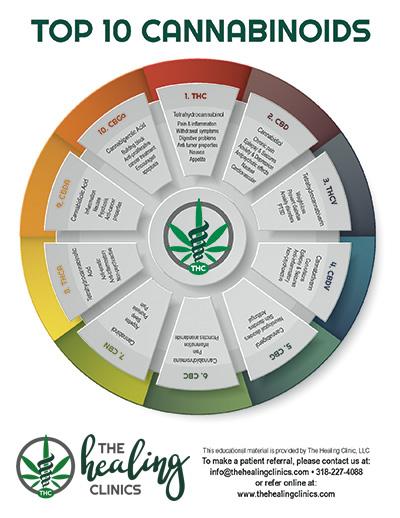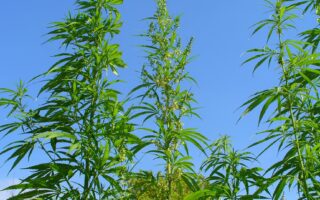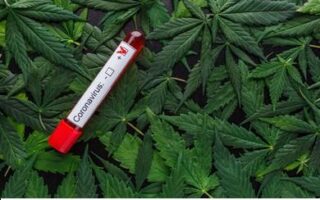In the soft glow of sunrise, a humble plant known as hemp emerges, its resilient stalks reaching for the sky. Yet, beneath this seemingly unassuming exterior lies a complex world of chemical compounds—cannabinoids—that have captured the attention of researchers, wellness enthusiasts, and everyday consumers alike. As society’s relationship with hemp evolves, a rich tapestry of understanding is being woven around its myriad cannabinoids, each playing a unique role in the plant’s influence on health and industry. This article delves into the intricate universe of cannabinoids found in hemp, exploring their potential benefits, synergies, and the ongoing debate surrounding their use in a changing landscape. Join us on this journey to uncover the secrets of hemp’s hidden treasures, where science meets nature in a dance of discovery.
Table of Contents
- Exploring the Diverse Cannabinoid Profiles of Hemp
- The Therapeutic Potential of Cannabinoids: What Science Reveals
- Navigating Legality and Regulations Surrounding Hemp Cannabinoids
- Practical Tips for Incorporating Hemp Cannabinoids into Daily Life
- Q&A
- In Retrospect
Exploring the Diverse Cannabinoid Profiles of Hemp
The world of hemp is rich and varied, boasting a plethora of cannabinoids that extend beyond just CBD and THC. As researchers delve deeper into the cannabis plant, they uncover a multitude of other compounds that can offer unique benefits. Some of the notable cannabinoids include:
- CBG (Cannabigerol) – Often referred to as the “mother of all cannabinoids,” CBG is non-psychoactive and has shown promise for its potential antimicrobial and anti-inflammatory properties.
- CBN (Cannabinol) - Known for its sedative effects, CBN can aid in promoting sleep and relaxation, making it a valuable addition to nighttime wellness routines.
- CBC (Cannabichromene) – This cannabinoid is found to interact with receptors associated with pain relief and inflammation, suggesting its role as a potent therapeutic agent.
- THCV (Tetrahydrocannabivarin) - With potential appetite-suppressing effects, THCV may appeal to those interested in weight management or metabolic health.
The interactions of these cannabinoids with receptors in the endocannabinoid system create a wide spectrum of therapeutic possibilities, each contributing to the plant’s overall profile. A deeper understanding of these variants can lead to more personalized and effective hemp-based treatments. For instance, a recent study highlighted the entourage effect, where the combined presence of cannabinoids enhances the plant’s therapeutic potential:
| Cannabinoid | Potential Benefits |
|---|---|
| CBD | Anti-anxiety, anti-inflammatory |
| CBG | Antimicrobial, anti-inflammatory |
| CBN | Sleep aid, relaxation |
| CBC | Pain relief, anti-inflammatory |
| THCV | Appetite suppression, metabolic health |
The Therapeutic Potential of Cannabinoids: What Science Reveals
The vast landscape of cannabinoids found in hemp possesses a plethora of therapeutic applications that are increasingly supported by scientific research. Cannabinoids such as cannabidiol (CBD), cannabigerol (CBG), and cannabinol (CBN) are emerging as powerful compounds that interact with the body’s endocannabinoid system, potentially influencing various physiological processes. Recent studies suggest that these compounds may help alleviate symptoms associated with chronic pain, anxiety, and inflammation. As researchers delve deeper, we are beginning to understand how these naturally occurring substances can be harnessed for their anti-inflammatory, neuroprotective, and analgesic properties.
The therapeutic versatility of cannabinoids is further emphasized by their ability to work synergistically—a phenomenon known as the entourage effect. This synergy occurs when the various compounds in hemp enhance each other’s effects, leading to more significant health benefits than isolated cannabinoids could achieve alone. Listed below are some common therapeutic benefits supported by research:
- Stress Relief: Cannabinoids like CBD can reduce cortisol levels, potentially easing anxiety.
- Pain Management: Cannabinoids have been shown to interact with pain receptors, offering relief.
- Sleep Aid: CBN and other compounds may improve sleep quality and duration.
- Anti-Seizure: CBD has demonstrated efficacy in reducing seizure frequency in epilepsy.
Navigating Legality and Regulations Surrounding Hemp Cannabinoids
The landscape of hemp cannabinoids is continually evolving, giving rise to a myriad of opportunities in both the health and wellness sectors. However, this landscape is fraught with an intricate web of laws and regulations that can differ significantly across regions. Understanding the legal status of various cannabinoids derived from hemp—such as CBD, CBG, and CBN—is crucial for consumers and businesses alike. In many jurisdictions, the federal legalization of hemp-derived products has spurred state-specific regulations that can impose restrictions on everything from cultivation to marketing.
Key factors to consider include:
- Source of Cannabinoids: Different regulations govern hemp derived from legalized sources versus unregulated ones.
- THC Content: Most places classify hemp as cannabis with less than 0.3% THC, but variations may exist.
- Product Types: The legality of edibles, oils, and topical products can vary widely.
To navigate these regulations effectively, it’s essential to stay updated on both state and federal laws. Frequent revisions and ongoing legal challenges mean that businesses must be proactive in ensuring compliance to avoid hefty penalties. Collaborative efforts between industry leaders, advocacy groups, and lawmakers are necessary to establish a coherent legal framework that balances innovation with safety.
Below is a simplified overview of regulatory status across key regions:
| Region | Cannabinoid Legality | Key Regulations |
|---|---|---|
| United States | Legal (with conditions) | Must contain <0.3% THC |
| European Union | Varies by country | Generally <0.2% THC |
| Canada | Legal | Must comply with Cannabis Act |
Practical Tips for Incorporating Hemp Cannabinoids into Daily Life
Integrating hemp cannabinoids into your daily routine can be a seamless endeavor with a few practical tips. Start small by introducing products like oils, tinctures, or capsules into your morning wellness routine. Consider adding a few drops of CBD oil to your morning smoothie or yogurt for an easy boost. You can also opt for cannabinoid-infused teas or coffees, which can offer a soothing start to your day. Additionally, explore edible options such as gummies or snacks that contain cannabinoids, making them a convenient choice for an afternoon pick-me-up.
To maximize the benefits of hemp cannabinoids, it’s essential to establish a consistent regimen. Incorporate a nightly routine by using topical salves or creams infused with cannabinoids to aid in relaxation and recovery after a long day. Pair these topical applications with a calming herbal tea for enhanced effects. Keeping a journal can also be beneficial; track your mood, sleep, and overall well-being to identify what products and dosages work best for you. By methodically integrating these practices, you can personalize your experience and discover the full spectrum of benefits offered by hemp cannabinoids.
Q&A
Q: What exactly are cannabinoids, and why are they significant in hemp?
A: Cannabinoids are a diverse group of chemical compounds that interact with the body’s endocannabinoid system, which helps regulate various physiological processes such as mood, appetite, and pain sensation. In hemp—one specific variety of the Cannabis sativa plant—cannabinoids such as CBD (cannabidiol) and THC (tetrahydrocannabinol) are particularly significant due to their potential therapeutic effects and non-intoxicating properties.
Q: How is hemp different from marijuana regarding cannabinoids?
A: The primary difference lies in their THC content. Hemp is defined as cannabis containing 0.3% THC or less, which means it won’t produce the psychoactive effects commonly associated with marijuana. Instead, hemp is often valued for its high concentrations of CBD and other beneficial cannabinoids, making it a suitable option for those seeking the therapeutic benefits without the high.
Q: What are the main cannabinoids found in hemp, and what are their potential benefits?
A: The most prominent cannabinoids in hemp are CBD, CBG (cannabigerol), CBN (cannabinol), and THCV (tetrahydrocannabivarin). CBD is well-known for its anti-inflammatory, analgesic, and anxiety-reducing properties. CBG is often touted as a powerhouse cannabinoid for its potential neuroprotective and antibacterial effects. CBN is linked to promoting sleep, while THCV may assist with appetite regulation and has potential in managing metabolic conditions.
Q: Are there any known side effects of cannabinoids from hemp?
A: While cannabinoids like CBD are generally considered safe, some individuals may experience mild side effects such as fatigue, changes in appetite, or gastrointestinal discomfort. It’s essential to consult with a healthcare professional before starting any cannabinoid regimen, especially for individuals taking other medications or with underlying health concerns.
Q: How is hemp-derived CBD commonly consumed?
A: Hemp-derived CBD can be consumed in various forms, including oils, tinctures, capsules, edibles, and topical creams. Each method of consumption has its unique onset time and duration of effect, catering to different preferences and needs. For instance, tinctures may offer quicker relief, while edibles provide longer-lasting effects.
Q: Is there a difference between hemp oil and CBD oil?
A: Yes, there is a distinction. While hemp oil is extracted from the seeds of the hemp plant and primarily contains omega fatty acids and other nutrients, CBD oil is derived from the flowers, leaves, and stalks of the hemp plant and contains higher concentrations of cannabinoids, particularly CBD. Thus, the two oils serve different purposes and benefits.
Q: Are cannabinoids from hemp legal everywhere?
A: The legality of hemp-derived cannabinoids varies by country and region. In the United States, the 2018 Farm Bill legalized hemp cultivation and the sale of hemp-derived products containing less than 0.3% THC. However, individual state laws may differ, so it’s crucial to check local regulations regarding the possession and use of hemp cannabinoids.
Q: What does the future hold for cannabinoids in hemp?
A: The future of cannabinoids in hemp looks promising, as ongoing research continues to uncover their potential therapeutic uses and benefits. Increased interest from consumers, coupled with advancements in technology and science, may lead to innovative products that harness the full spectrum of cannabinoids, paving the way for new applications in health and wellness. As regulations evolve and more studies are conducted, we can expect to learn even more about these fascinating compounds.
In Retrospect
the world of cannabinoids in hemp presents a fascinating tapestry of potential and promise. As we continue to explore the intricate compounds found within this versatile plant, we uncover a wealth of benefits that have captivated researchers, health enthusiasts, and casual consumers alike. From the well-known effects of CBD to the lesser-studied properties of other cannabinoids, the research landscape remains vibrant and rich with opportunities.
As the dialogue surrounding hemp and its cannabinoids evolves, so too does our understanding of their role in wellness, industry, and beyond. It is essential to approach this journey with curiosity and openness, recognizing both the scientific rigor and the anecdotal wisdom that inform our knowledge.
Ultimately, the story of cannabinoids in hemp is just beginning to unfold, promising new insights and innovations that could reshape our approach to health and sustainability. As we stand at the intersection of tradition and modernity, we invite you to continue exploring this captivating field, ensuring that informed choices guide us toward a future full of potential.



